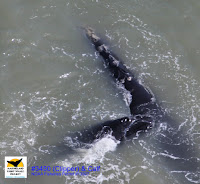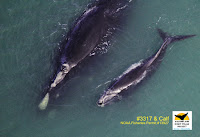We certainly hope that this finds everyone recovering well from the turmoil of Hurricane Matthew. The Project was very fortunate; our office at the GTM NERR Science Center was undamaged as well as the hanger in Hastings where we keep the Air Cam. The majority of our survey locations are useable and we are developing alternatives for those that may not be serviceable in time for the surveys. We are making preparations for Season #17 and look forward to seeing all of you who will be able to help out this winter. As a possible harbinger of the season to come, the first right whale has reached the SEUS! South Carolina’s Dept. of Natural Resources reported a sighting of a single adult on 16 Nov. near the SC/GA border. We can hardly wait to see what is in store for us!
IMPORTANT DATES FOR THE 2017 SEASON
Right Whale Introductory Talks for new volunteers, surveyors and spotters alike, and anyone wanting to know how to spot right whales. If you are a returning volunteer and would like a refresher, by all means join us. (Encourage friends and neighbors to attend!):
Saturday, Dec. 3, 2016
11:00 AM to 12:30 PM
Southeast Branch
St. Johns County Public Library
6670 US 1 South
St. Augustine
Tuesday, Dec. 6, 2016
10:00 to 11:30 AM
Flagler County Public Library
2500 Palm Coast Parkway, NW
Palm Coast
Thursday, Dec. 8, 2016
6:00 PM to 7:00 PM
Ocean Art Gallery
206 Moody Blvd.
Flagler Beach, FL
Saturday, Dec. 10, 2016
10:00 AM to 11:30 AM
Ormond Beach Public Library
30 S. Beach St.
Ormond Beach
Survey Training Class for ALL SURVEY volunteers, new and returning, who are planning to participate in the dedicated survey effort:
Friday, Dec. 30, 2016
2:30 PM to 5:00 PM
Center for Marine Studies, Whitney Laboratory for Marine Bioscience
9505 Ocean Shore Blvd., Marineland
Surveys Start:
Monday, Jan. 2, 2017
Surveys End:
Sunday, March 12, 2017








